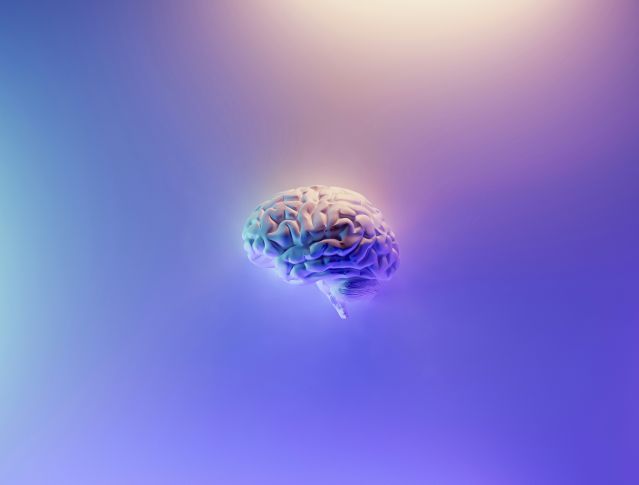Psychosis
Overlooked Brain Regions in Patients With Schizophrenia
Structural differences in the cerebellum affect patients with schizophrenia.
Posted July 22, 2024 Reviewed by Monica Vilhauer
Key points
- Previous biological research of schizophrenia primarily focused on the cerebrum.
- Once thought to be merely for motor control, the cerebellum is of newer interest.
- Structural differences in healthy controls and patients with schizophrenia reveal fundamental distinctions.

Have you ever heard a doctor say that schizophrenia is a real brain disease? I always think of Esmé Weijun Wang in The Collected Schizophrenias. After her doctor told her that every psychotic episode produces significant brain damage, she began to have the delusion that spiders were eating her brain.
Wang took this to heart and thus sprouted a real debilitating delusion. Having a background in psychology, she understood the real implications of her diagnosis of schizoaffective disorder.
While there are no spiders digging holes into the brain, there is real physical evidence that schizophrenia can affect structural brain changes. Patients with schizophrenia generally have less grey matter than healthy controls in the cerebrum. Grey matter is a thick layer of neurons and brain cells that aid in processing memories, cognitive performance, and more severe symptoms.
When these findings were first published years ago, it shocked researchers and patients to learn that living with schizophrenia truly is a physical brain deterioration that can leave one with real impairments affecting cognition and behavior. Typically, grey matter loss is seen at its most drastic in younger patients and loses acceleration later in life. Grey matter loss often happens in old age, but to a lesser degree.
The focus of much biological schizophrenia research has been primarily on the cerebrum, which is the part of the brain that is the largest and manages processes like maintaining thoughts, actions, sounds, sights, and more. A psychology student might recognize that the cerebrum contains the frontal, temporal, occipital, and parietal lobes, which all manage different processes of interacting with the world.
Overlooked Areas of Research
There have been fewer research studies that focus on other parts of the brain and body in terms of grey matter loss. The cerebellum is one of them. Once thought to be merely a function control of sensorimotor processes, the cerebellum is now of interest to researchers regarding the development of schizophrenia.
The cerebrum and cerebellum are connected through the cortico-cerebello-thalamus-cortical circuit (CCTCC), which moderates information taken from the cerebrum and sends it back to the cerebellum to fine tune information related to cognitive processing.
Damage to the cerebellum can exhibit symptoms that mimic schizophrenia, such as affective flattening, inappropriate behavior, language deficits, spatial cognition, and executive function, to name a few.
Early studies indicate that there is significant loss of grey matter in the cerebellum in patients with schizophrenia, regardless of whether they are medicated or not. There are mixed results, however, and the scientific literature still reports contradictory findings between studies and thus, subjects, indicating that true brain damage might be heterogeneous between patients while still holding a recognizable pattern in schizophrenia patients.
A New Study
In a study published in January of this year in Nature, researchers investigated cerebellar grey matter loss in 242 Korean patients 18 to 65 years old. The group consisted of 72 patients with psychotic symptoms for less than 24 months, 43 patients who had chronic schizophrenia for more than 24 months, and 127 healthy controls.
Through MRI scans, researchers used the high resonance imaging of these patients to determine the degree of grey matter loss. They found that patients who exhibited both chronic and short term symptoms of less than 24 months had significantly smaller grey matter volumes in the cerebellum than the healthy controls.
Since there were no significant differences between grey matter loss in early stages of schizophrenia and later stages, the researchers concluded that grey matter deterioration might be a precursor to the generation of the disorder rather than the disorder causing the deterioration, which is more commonly thought.
Correlation analysis revealed that cerebellum grey matter size is related to the functioning of the cerebrum in the areas of executive function, cognition performance, and more. The CCTCC pathway (the pathway that bridges both the cerebrum and cerebellum together) seems to play a very significant role in the structural differences of patients with schizophrenia and healthy controls.
So, What Does This Mean?
This study is hugely significant considering studies of the cerebellum have historically been neglected due to the idea that the cerebellum was only merely responsible for motor control. This study demonstrates that schizophrenia is in fact impacted by a potential disturbance of brain structure in the cerebellum before the disorder fully manifests, indicating new potential areas of research focus for future studies.
However, many questions remain. It is a reasonable concern of patients with schizophrenia to wonder about grey matter loss being a permanent and irreversible component of living with the disorder. Can these lost components be regrown through behavioral, psychopharmacological, or therapeutic measures?
While there are not many answers that can be given through these very early stages of research, we still do have evidence that patients with schizophrenia do survive it and live whole lives with the disorder. There is hope for people living with the condition regardless of its scientific study. Studying the brain can only free patients from a fateful diagnosis by equipping them with more tools and understanding to develop new therapies for future consideration.
References
Kang, N., Chung, S., Lee, SH. et al. Cerebro-cerebellar gray matter abnormalities associated with cognitive impairment in patients with recent-onset and chronic schizophrenia. Schizophr 10, 11 (2024). https://doi.org/10.1038/s41537-024-00434-8




